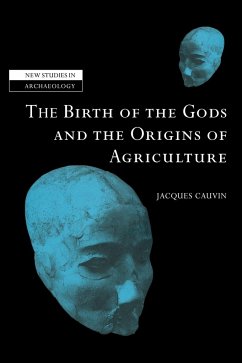Jacques Cauvin has spent many years researching the beginnings of the Neolithic in the Near East, excavating key sites and developing new ideas to explain the hugely significant cultural, social and economic changes which transformed mobile hunter-gatherers into the first village societies and farmers in the world. This synthesis of his mature understanding of the process beginning around 14,000 years ago, challenges ecological and materialist interpretations, arguing for a quite different kind of understanding influenced by ideas of structuralist archaeologists and members of the French Annales school of historians. Defining the Neolithic Revolution as essentially a re-structuring of the human mentality, expressed in terms of new religious ideas and symbols, the survey ends around nine thousand years ago, when the developed religious ideology, the social practice of village life and the economy of mixed farming had become established throughout the Near East and east Mediterranean, and spreading powerfully into Europe.
Table of contents:
Part I. The Origins of Agriculture: 1. Natural environment and human cultures on the eve of the Neolithic; 2. The first pre-agricultural villages: the Natufians; 3. The revolution in symbols and the origins of Neolithic religion; 4. The first farmers: socio-cultural context; 5. The first farmers: strategies of subsistence; 6. Agriculture, demography, society: taking stock; 7.The Neolithic Revolution: a transformation of the mind; Part II. The Beginnings of Neolithic Diffusion: 8. Geographical and chronological framework for the first stages of diffusion; 9. The birth of a culture in the northern Levant and the neolithisation of eastern Anatolia; 10. Diffusion in the central and southern Levant; 11. The elements of symbolism in the southern Levant; 12. The dynamics of a dominant culture; Part III. The Great Exodus: 13. The problem of Neolithic diffusion; 14. The achievement of neolithisation in the 'Levantine core'; 15. The arrival of farmers on the Levantine coast and in Cyprus; 16. The first villagers push east: the eastern Jezirah and the Syrian desert; 17. Pastoral nomadism; 18. Hypotheses for the spread of farming; 19. Postscript.
This innovative study of the great cultural and economic changes in the Near East between 10,000 and 7,000 BC as Palaeolithic societies of hunter-gatherers gave way to village communities of Neolithic food-producers argues that the Neolithic revolution must be understood as an intellectual transformation, revealing itself in symbolic activities.
Study of social and economic transformations in the Near East during Palaeolithic-Neolithic transition.
Table of contents:
Part I. The Origins of Agriculture: 1. Natural environment and human cultures on the eve of the Neolithic; 2. The first pre-agricultural villages: the Natufians; 3. The revolution in symbols and the origins of Neolithic religion; 4. The first farmers: socio-cultural context; 5. The first farmers: strategies of subsistence; 6. Agriculture, demography, society: taking stock; 7.The Neolithic Revolution: a transformation of the mind; Part II. The Beginnings of Neolithic Diffusion: 8. Geographical and chronological framework for the first stages of diffusion; 9. The birth of a culture in the northern Levant and the neolithisation of eastern Anatolia; 10. Diffusion in the central and southern Levant; 11. The elements of symbolism in the southern Levant; 12. The dynamics of a dominant culture; Part III. The Great Exodus: 13. The problem of Neolithic diffusion; 14. The achievement of neolithisation in the 'Levantine core'; 15. The arrival of farmers on the Levantine coast and in Cyprus; 16. The first villagers push east: the eastern Jezirah and the Syrian desert; 17. Pastoral nomadism; 18. Hypotheses for the spread of farming; 19. Postscript.
This innovative study of the great cultural and economic changes in the Near East between 10,000 and 7,000 BC as Palaeolithic societies of hunter-gatherers gave way to village communities of Neolithic food-producers argues that the Neolithic revolution must be understood as an intellectual transformation, revealing itself in symbolic activities.
Study of social and economic transformations in the Near East during Palaeolithic-Neolithic transition.








